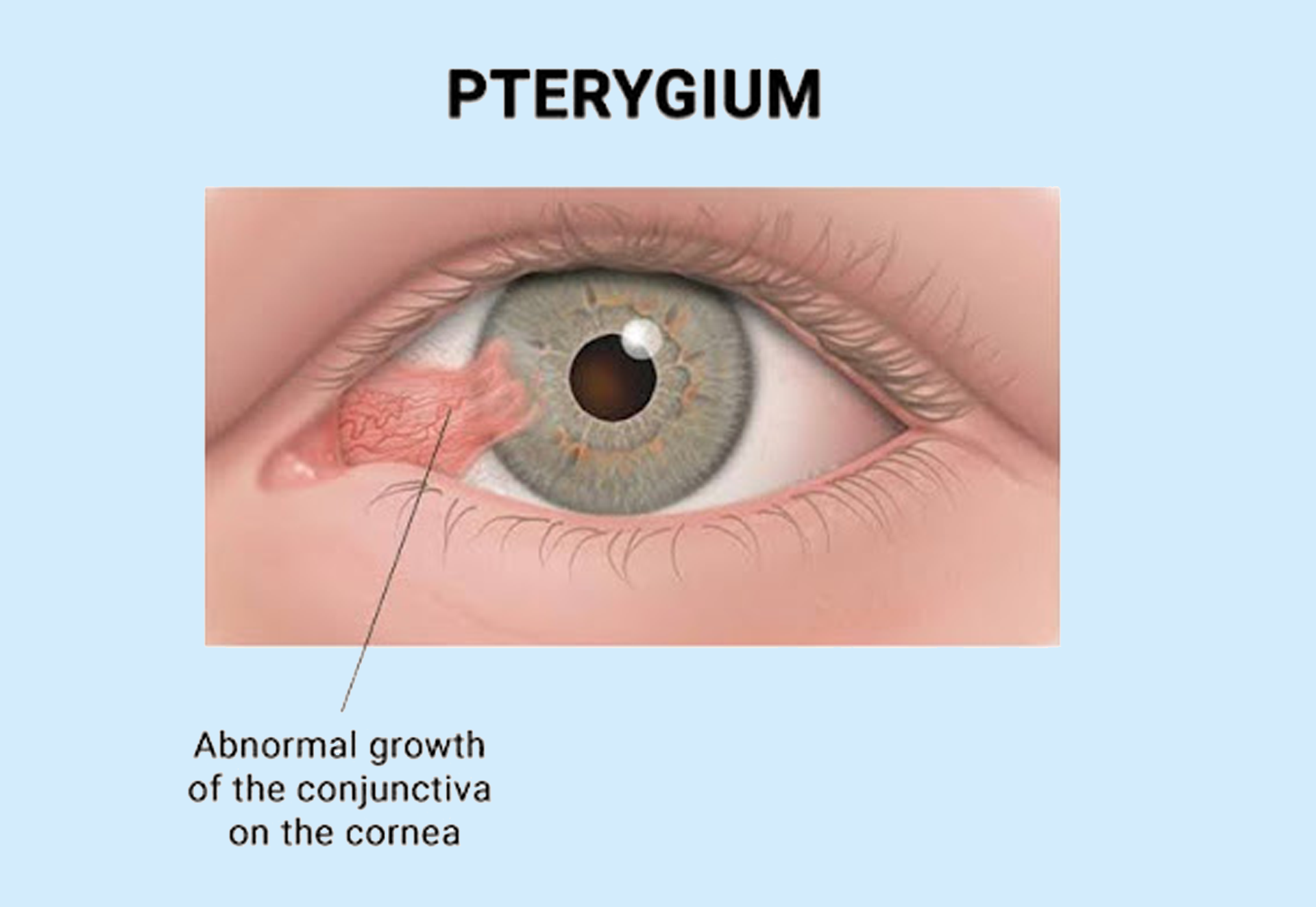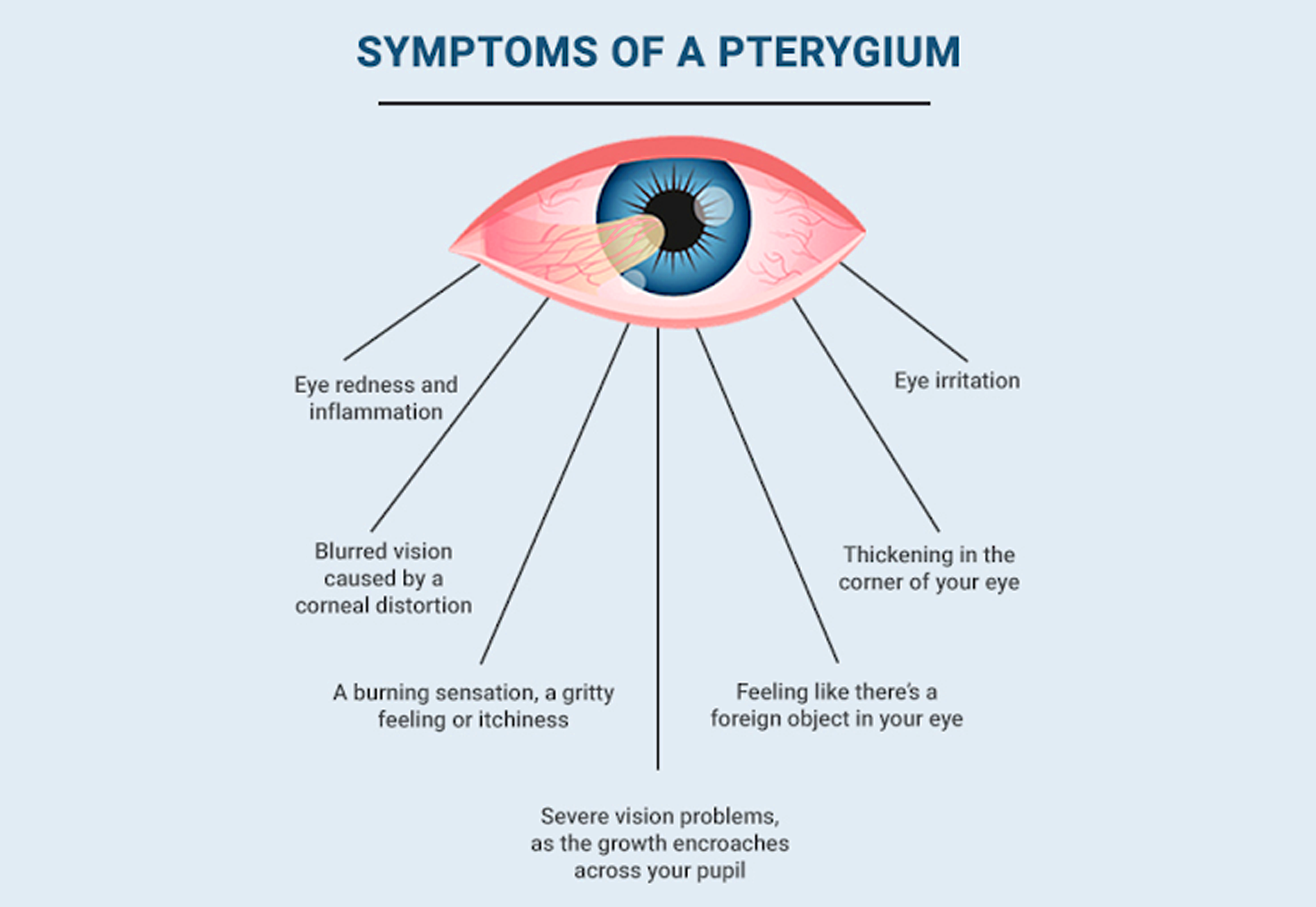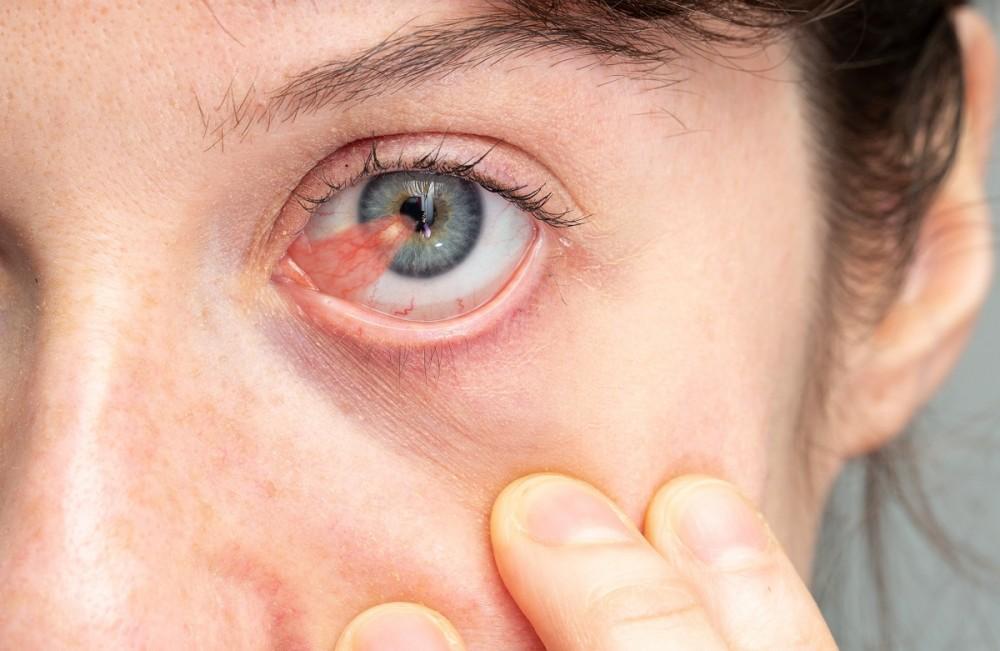Pterygium
Pterygium (pronounced TRY-jee-um) is a non-cancerous growth on the conjunctiva that lines the inside of your eyelid to protect it from harmful microbes. The conjunctiva also lubricates your eyes by producing tears and mucus. A pterygium is a triangular-shaped tissue growth that extends to your cornea. In most cases, it appears raised with visible blood vessels. The growth, also known as surfer’s eye, can occur on either side of your eye.
A pterygium mostly grows from the inner corner of the eye near your nose. It usually remains small, but sometimes it grows to cover your pupil, restricting your vision. If untreated, a pterygium may grow across your cornea, causing vision problems that may require pterygium surgery to correct. When the growth causes eye discomfort, it requires immediate attention surgery may be indicated..


WHAT CAUSES SURFER’S EYE?
The exact cause of pterygium is unknown, but identified conditions are associated with the development of surfer’s eye:
Long-term exposure to UV light. People who live near the equator are at a higher risk of developing a surfer’s eye. The long hours of sunlight in these regions increase the risk of exposure to ultraviolet radiation (UV) light. We,identify UV light as one cause of this fleshy eye growth.
Exposure to sand and dust. Long-term exposure to dust increases the risk of Sand and dust are irritants that can inhibit your conjunctiva’s ability to lubricate your eye. People exposed to such irritants on a regular basis are more vulnerable to pterygium.
Other irritants. Exposure to wind, smoke and pollen can also increase the risk of getting this non-cancerous eye growth.

HOW IS PTERYGIUM TREATED?
The size of the growth influences the treatment your eye doctor chooses. Pterygium treatments include:
- A special contact lens. We can prescribe special contact lenses placed over your eye to protect against environmental irritants and UV light.
- Medications. We can opt for conservative treatment of a surfer’s eye through medications. For mild cases of surfer’s eye, over-the-counter tear drops may be enough to deal with redness and swelling. Other medications include topical corticosteroid anti-inflammatories and non-preserved ointments.
- Pterygium excision surgery.The procedure is performed to remove the pterygium under topical anesthesia .
- It helps to improve your vision and stops eye discomfort. Surgical options include conjunctival autograft technique which is considered the perfect technique to stop recurrence .

